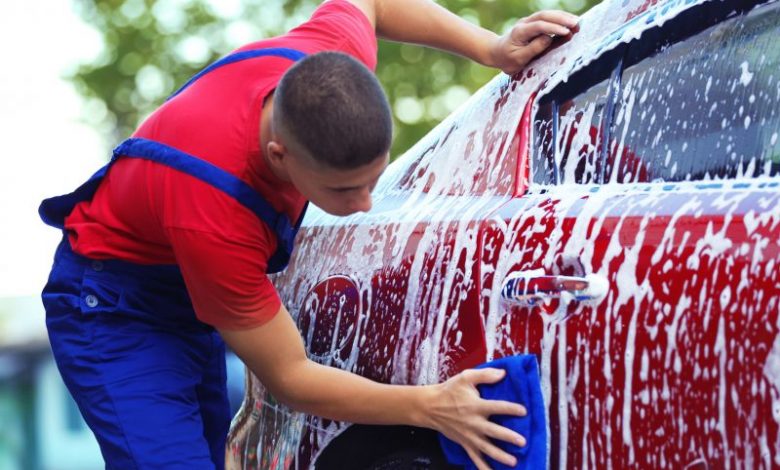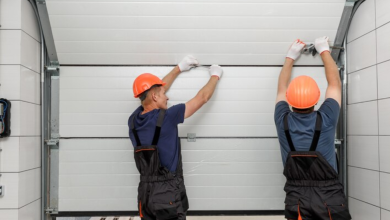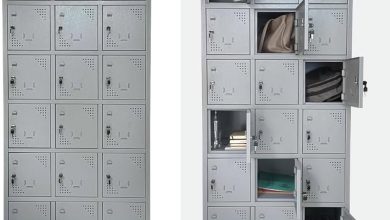Which Kind Of Car Wash Is Best For Your Vehicle?

Like there’s many ways to cook an egg, there are various kinds of auto washes. You can locate them nearby with the help of itscarwash.com And don’t assume that it will be a sign that every washing method is equal, far from it. Each method has each of its own advantages and drawbacks. The pros and cons, but they’re not always obvious. This is why we’ve decided to go over every wash technique by separating the good from the bad to help you understand the most crucial aspect of car maintenance.
Method #1: Handwash
If you ask any detailing expert, they’ll inform you of the safest method of washing your car. is to hand-car wash. There are a variety of methods that a handwash can be accomplished that range from the classic two-bucket method , to high-tech pressure-filled foam cannons however, regardless of the method you choose each one requires you (or your personal detailer) washing the water using soap and then washing your vehicle using an easy-to-handle mitt. What is a handwash like? In our detailing facility, Simon’s Shine Shop, we begin with a pre-wash where we cover the car with snow foam and wash the car clean. This is not a must however it does help us to get a thorough clean. After that, we paint the vehicle with a layer of suds. This we then stir using soft wash mitts. The foam breaks down the contaminants down, and the wash mitts break the particles loose. Then, we rinse and dry. This type of wash takes an extensive amount of time, as well as a range of equipment, and , if you’re having it done by professionals, a small amount of cash. However, between how soft it’s on the surface and how effective it is in removing any heavy contaminants, it’s by far the most efficient type of car wash that you can accomplish.
PROS:
- Reduces scratching
- Can remove heavy contamination
CONS:
- It takes longer than other methods.
- Costlier than automated washes
- It requires more equipment than other methods.
- Requires lots of water
- It is difficult to accomplish this with a small space
- It’s difficult to complete in colder temperatures.
Method #2: Waterless Wash
A waterless washing requires the spray bottle and a few microfiber towels. Spray the area with the waterless cleanser and then wipe it clean using a microfiber towel. Waterless washes are used by people for many reasons. They do not have space to do a handwash and they aren’t able to make use of water, are in the middle of a road trip, etc. It’s basically an option of the last option. Why’s that? Waterless washes aren’t effective in removing gunk that is heavy. They’ll get rid of dust but if you’ve just came back from off-roading on a wet trail, you’re unlikely to be having much success. Another issue is their possibility of scratching. While waterless products are designed to smooth the surface but they’re not quite as close to the slickness that comes from an foamy handwash. There’s an excellent chance that you’ll get up and drag a particulate across your surface which can cause scratches.
PROS:
- It’s not as time-consuming as handwashes or rinseless wash
- It is possible to do this with a limited space
- Doesn’t make use of water.
- It only requires a waterless washing item and towels made of microfiber
CONS:
- More opportunities to scratch
- Can’t remove heavy contamination
Method #3: Rinseless Wash
A rinseless wash is distinct than a wash that is water-free. In a sense it’s like an amalgamation of handwashes and a waterless wash. When you use a rinseless wash you’ll use a tiny amount of your rinseless washing item and pour it with an ice bucket. The product won’t create any suds. That’s the reason you don’t have to rinse. What you must do after you’ve washed the area is clean it to dry. Rinseless washes can be performed using wash mitts as well as microfiber towel. Many detailers favor using the “Garry Dean Method”, that involves soaking a number of microfiber towel in buckets that is filled with rinseless wash product as well as water. One microfiber towel is taken then squeeze it dry and place it in a bucket to dry. After that, you spray the panel with a pre-wash solution and then grab a moist microfiber towel to begin cleaning. Then, you take your wrung-out drying towel, then dry the panel and the final step is to grab a new dry microfiber to complete dry process. Repeat the process panel-by-panel until your car is completely clean. The rinseless method of washing is preferred by people who are under water restrictions or with limited space that are also concerned about the scratching that a waterless wash can cause. The method still causes more scratches than handwashes, but much less than a waterless. It won’t be able to get rid of large amounts of dirt as you would using a handwash.
PROS:
- It is faster than handwashing
- It requires less water than a handwash
- Does not require as much equipment as hand-washing
- It is possible to perform the task with a limited space
- It is less likely to scratch than a wash that is water-free
CONS:
- A handwash is more likely to cause scratches than handwash
- Can’t remove heavy contamination
- This requires additional equipment than regular wash
Method #4: Automatic Wash
Automatic car washes Also often referred to as “tunnel” washes, generally involve driving your vehicle on conveyor belts, which will lead you through a set of blowers and brushes. The bristles of these rough brushes are usually contaminated by the abrasive residue of previous vehicles that can damage the surface. They also employ harsh cleaning chemicals which can strip coatings and waxes and dry out your paint which could lead to cracking, or even fade. So , why would anyone wish to utilize any of them? They’re affordable and take a short time to complete and are the most sought-after type of wash simply because of their convenience. Many people either don’t understand or care about how much they’re damaging their paintwork. It’s not necessarily a bad thing for detailers who are professionals; however, all scratching causes many people pay for paintwork repair!
PROS:
- Inexpensive
- Fast
CONS:
- Causes excessive scratching
- Harsh chemicals can damage finish
- It is not possible to eliminate heavy contamination.
Method #5: Brushless Wash
A “brushless car wash” is an automatic wash that utilizes strips of soft, soft cloths as bristles to clean its machine. It is possible to think that this eliminates the problem of abrasive bristles damaging your finish, but dirty cloths can scratch as hard as bristles. The dirt left over from the hundreds of vehicles that passed before you will damage your surface. Additionally, these washes make use of those same chemicals that we have mentioned earlier.
PROS:
- Inexpensive
- Fast
- Abrasive less than a brush that has an automatic wash
CONS:
- Causes severe scratching
- Harsh chemicals can damage finish
- It is not possible to eliminate heavy contamination.
Method #6: Touchless Wash
A “touchless car wash” Cleans” your vehicle without the use of brushes or bristles. Instead the entire process is carried out by using chemical cleaners, high pressure washers and pressurized water. This sounds like it can solve all the issues of other automatic washes? Well, not quite. First, you’ve faced with harsh chemicals to contend with. If you don’t want to dry your paint or even risk stripping your coating be sure to know prior to time which type of chemicals they’re making use of. Keep in mind that brushless washes as well as touchless washes are
Not
It’s the identical. Many people see “brushless” and assume that is “touchless”. Do not make this mistake! Do your research prior to buying and make sure you’re buying the correct type of wash.
PROS:
- Much less expensive than hand washing
- Fast
- Reduces scratching
CONS:
- More expensive than automated and brushless washes.
- Chemicals that are harsh can damage the finishing
- It is not possible to eliminate heavy contamination.
Other Methods
We’ve seen people wash their cars using just about every thing you can imagine, from paper towels to Windex. Of course, not because you
could
Doesn’t mean that it doesn’t mean
Should
. If it’s not yet used in the past it’s likely to be an explanation for why. Whatever ingenuous method you come up with you’re likely to harm your finishing. That’s the worst thing you can do. it.
Our Verdict
The most effective way to clean the finish of your vehicle is a handwash.
It’s the most gentle wash you can do without sacrificing quality. As with all things in life, sometimes , the optimal isn’t the case. So , what’s the best second (and fourth, third and fifth)? This is our list:
- Handwash
- Touchless wash (if using gentle soap)
- Rinseless wash
- Waterless wash
- Brushless wash
- Automatic wash
Agree? Disagree? Let us know in the comments below! You can read also this article… Bleeding And Spotting During Pregnancy




